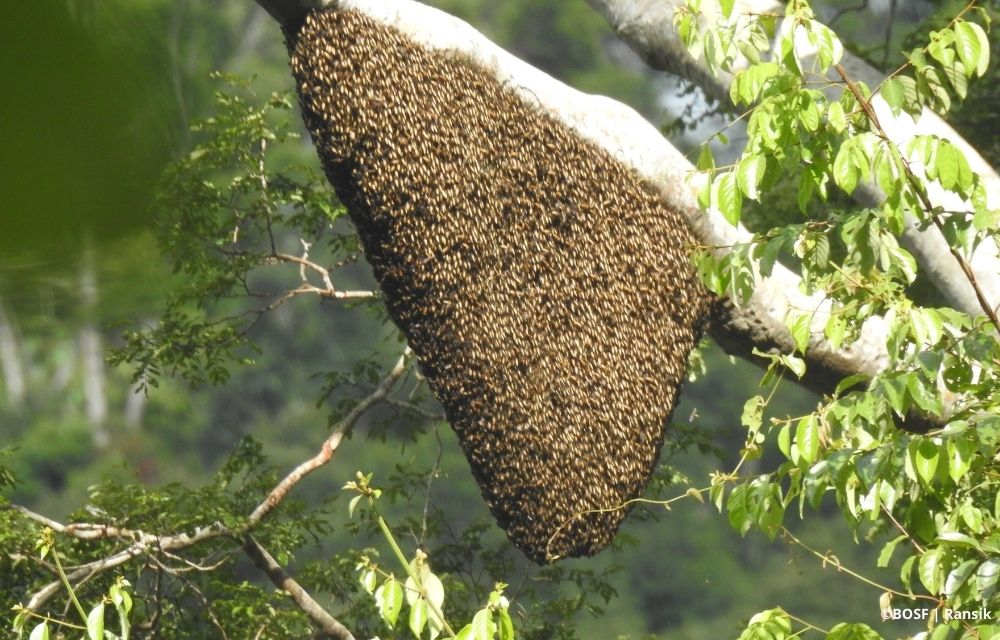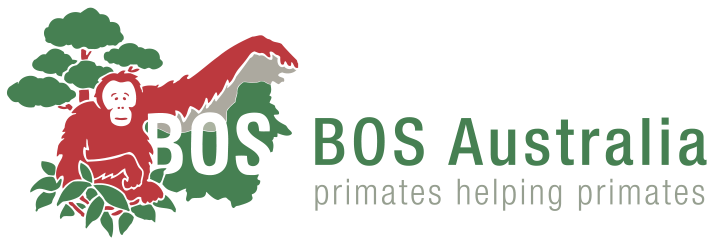BEES TAKE OVER THE CAMP

Sweet, flavourful, and nutritious, honey is beloved by nearly everyone, but the same cannot be said for bees. As the season for bees comes to Camp Nles Mamse, our post-release monitoring team must be on high alert.
The forest bees flying around Camp Nles Mamse frequently sting at our team’s feet as they try to go about their days. Right now, bee stings are near a daily occurrence, and the team even needs to be careful of bee attacks when going to the bathroom!
Fed up and in pain, the team decided to find the source of the never-ending stream of bees. Their efforts were rewarded with discovering several large hives in tall trees directly behind the camp. However, many hives were over 30 metres off the ground, making it impossible for our team to chase away the bee colony or gather the honey.
Honey from forest bees is a popular non-timber forest product (NTFP) usually utilised by local communities as a tradable commodity. In Indonesia, it is used as a delicious sweetener and as a traditional medicine.
Forest honey differs from honey produced by farmed bees in that it comes from the nectar of various local flowers, which enhances its benefits. Additionally, forest honey is much purer due to minimal processing and the absence of additives.





